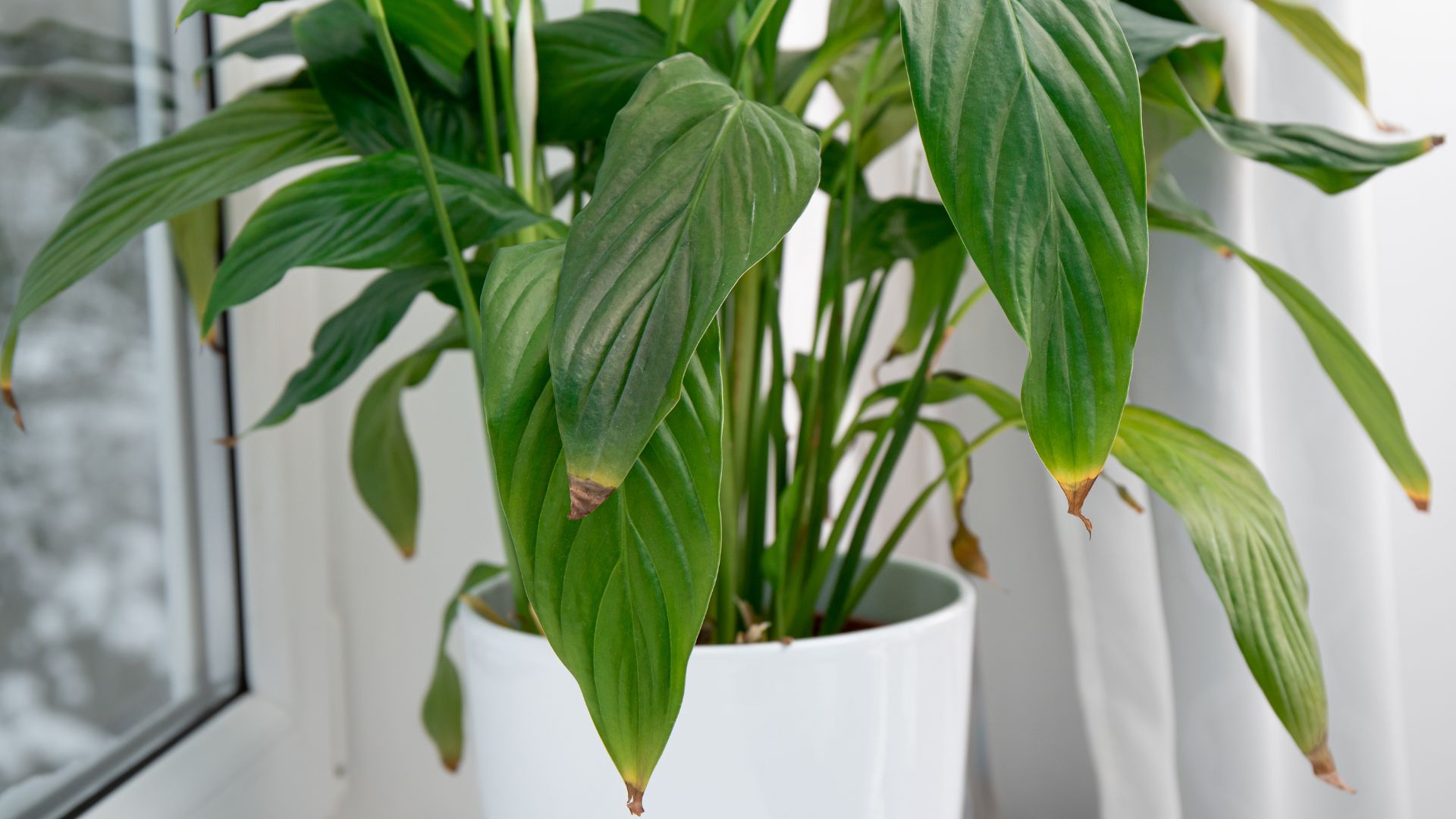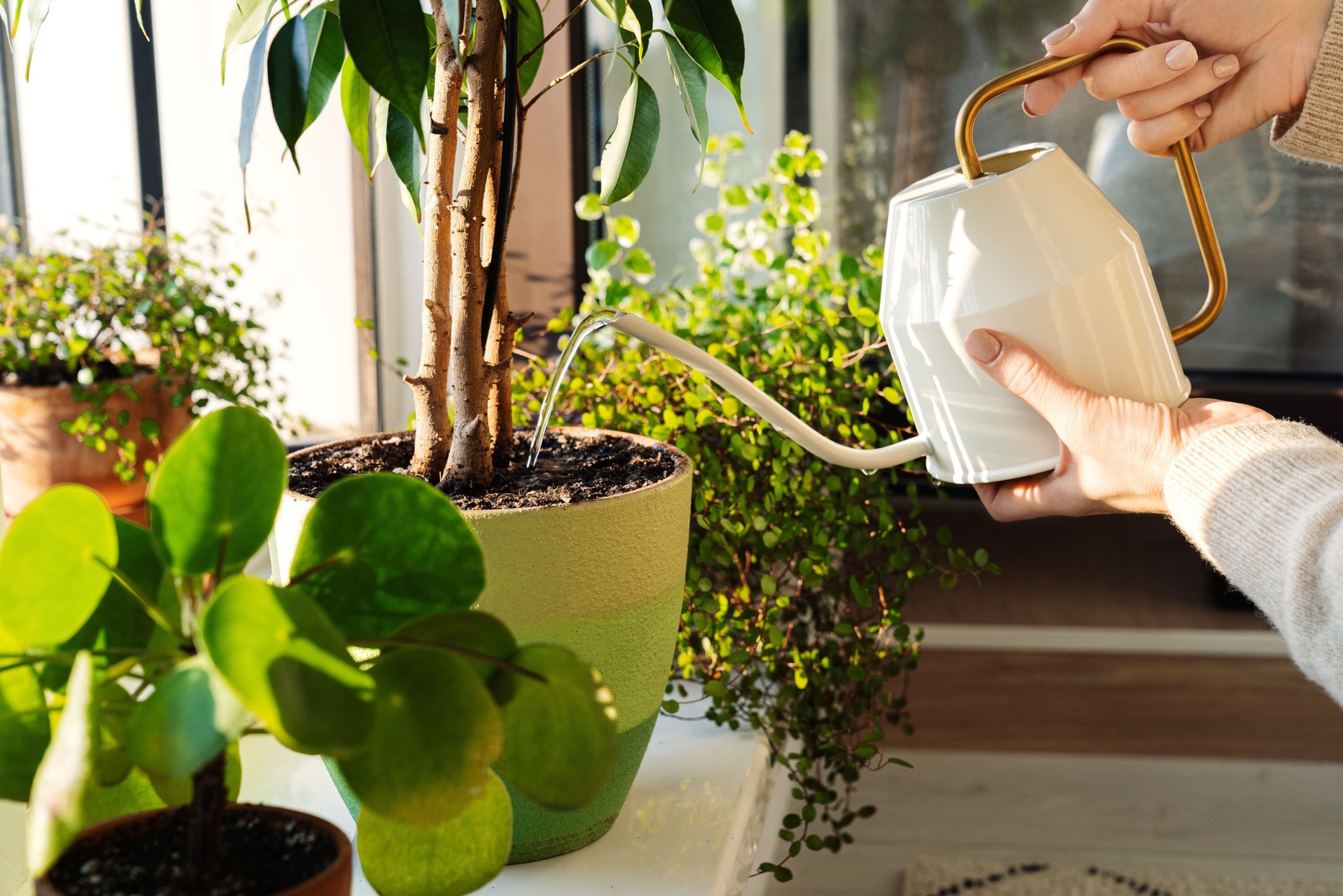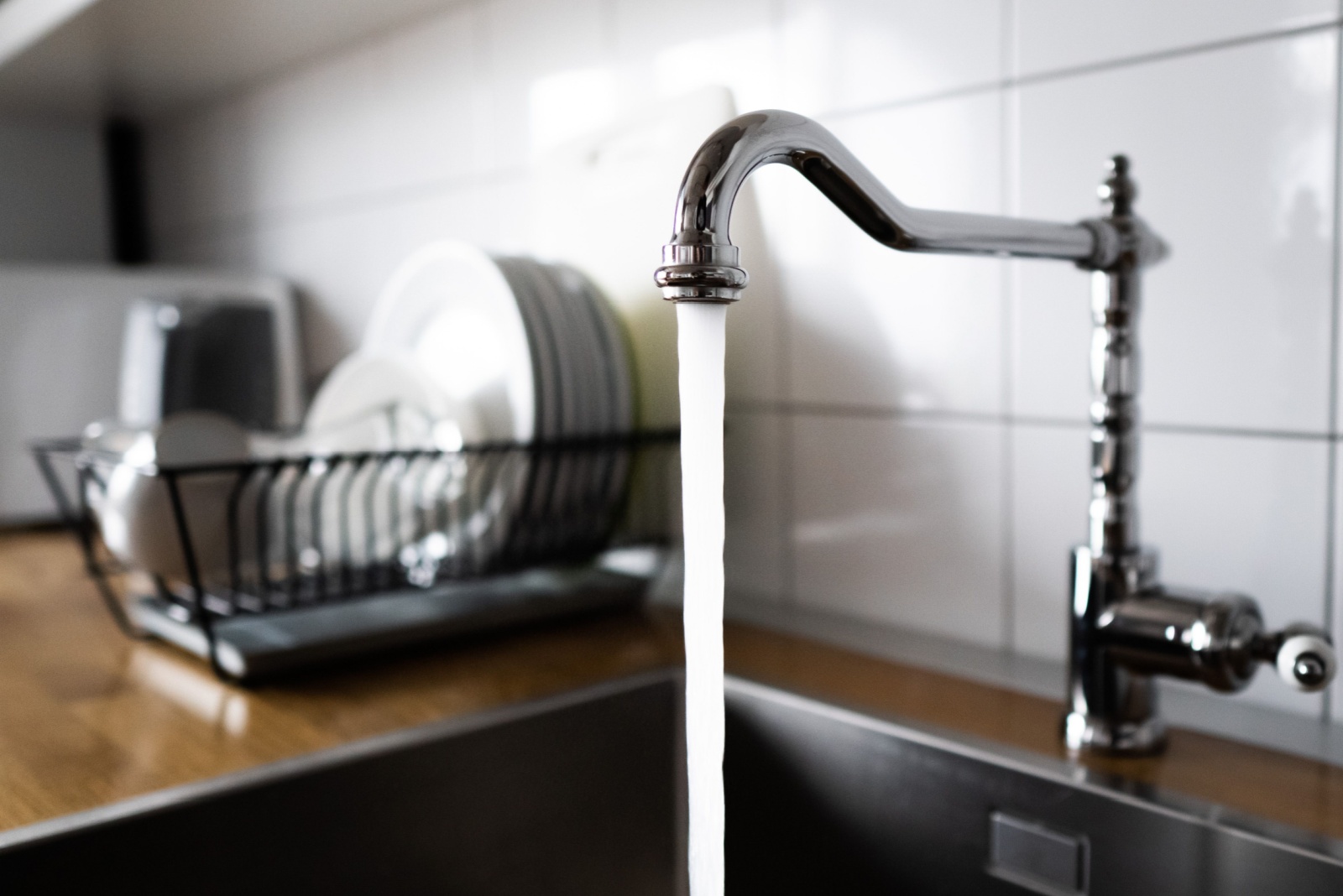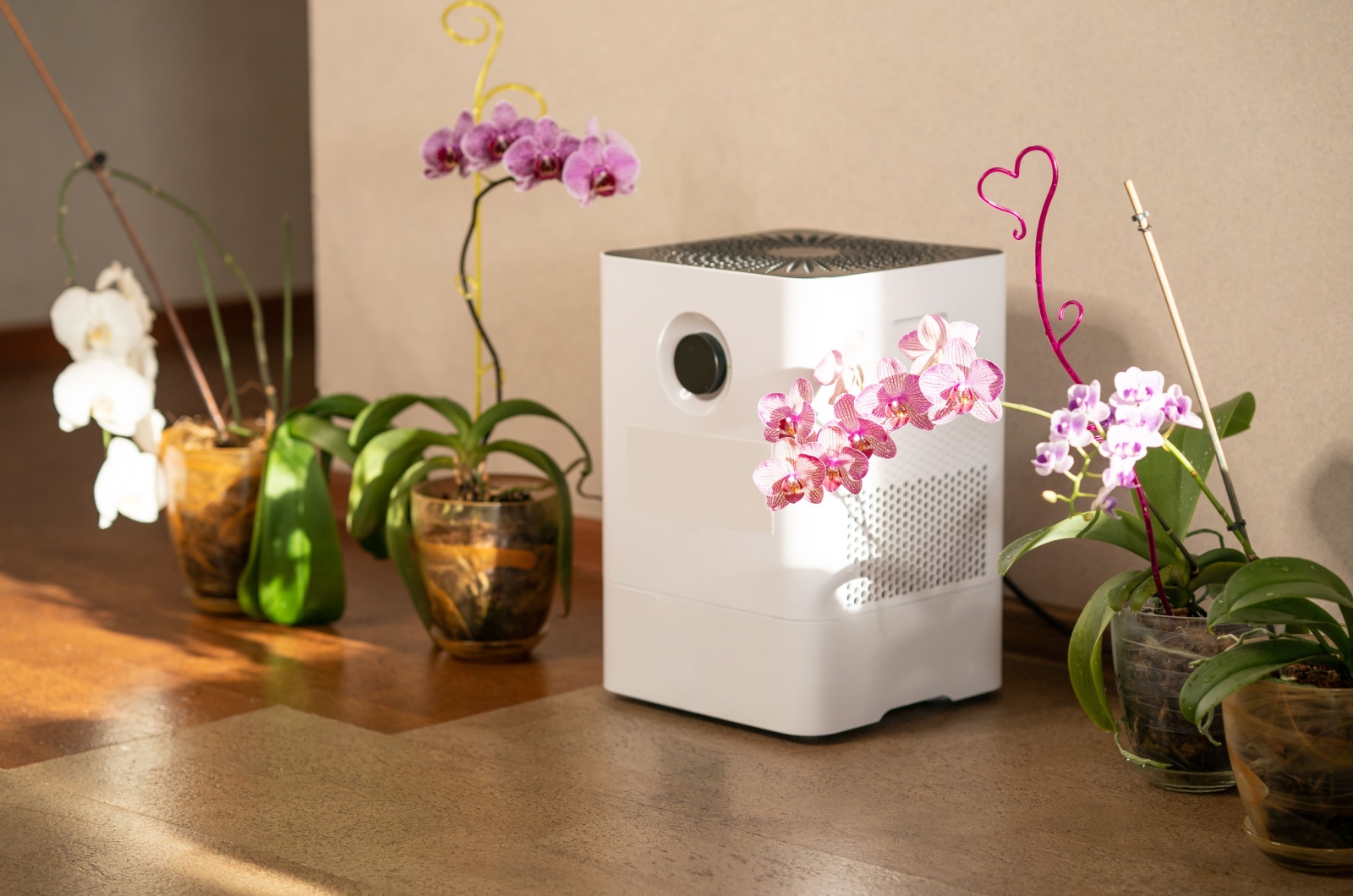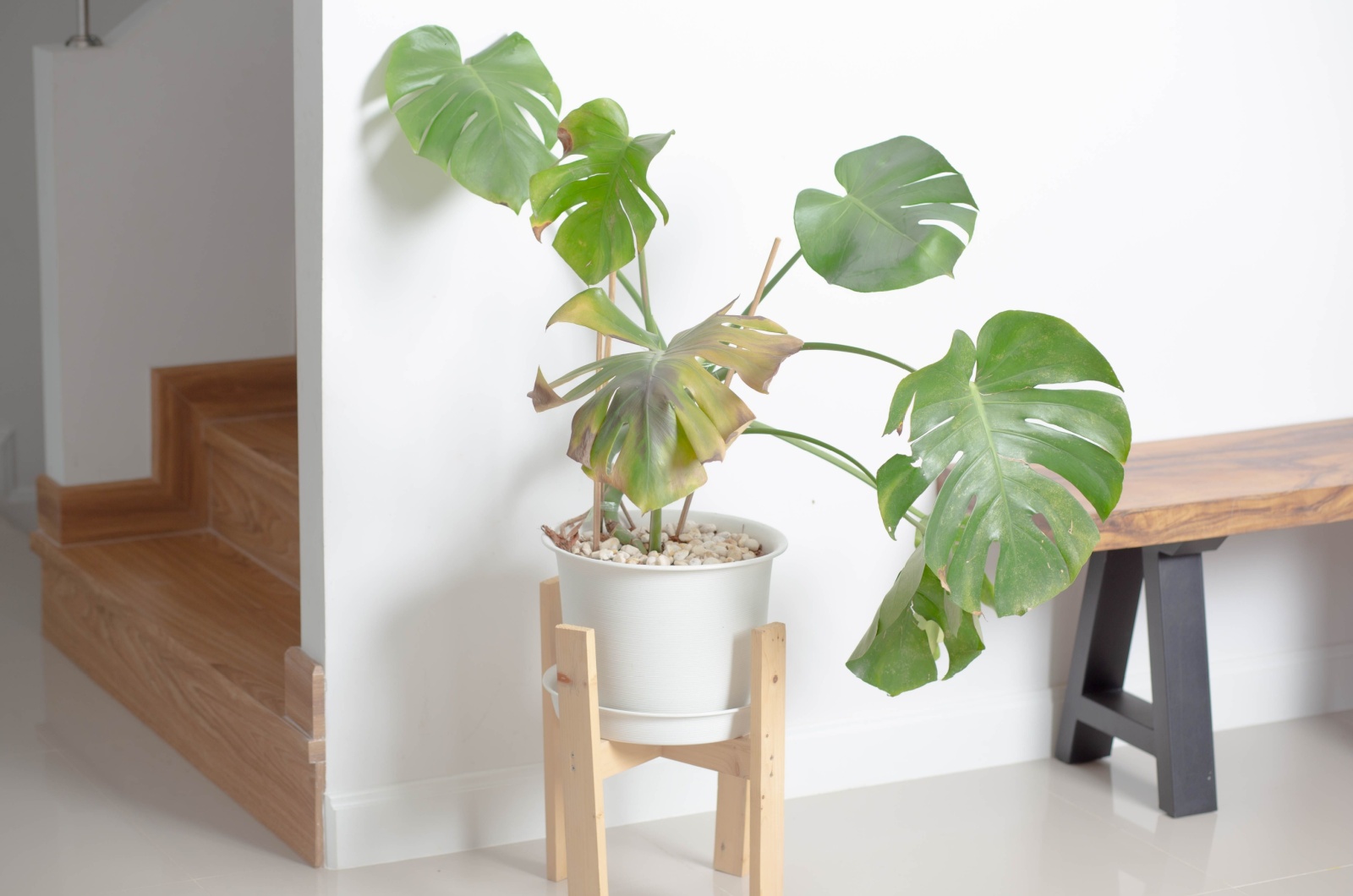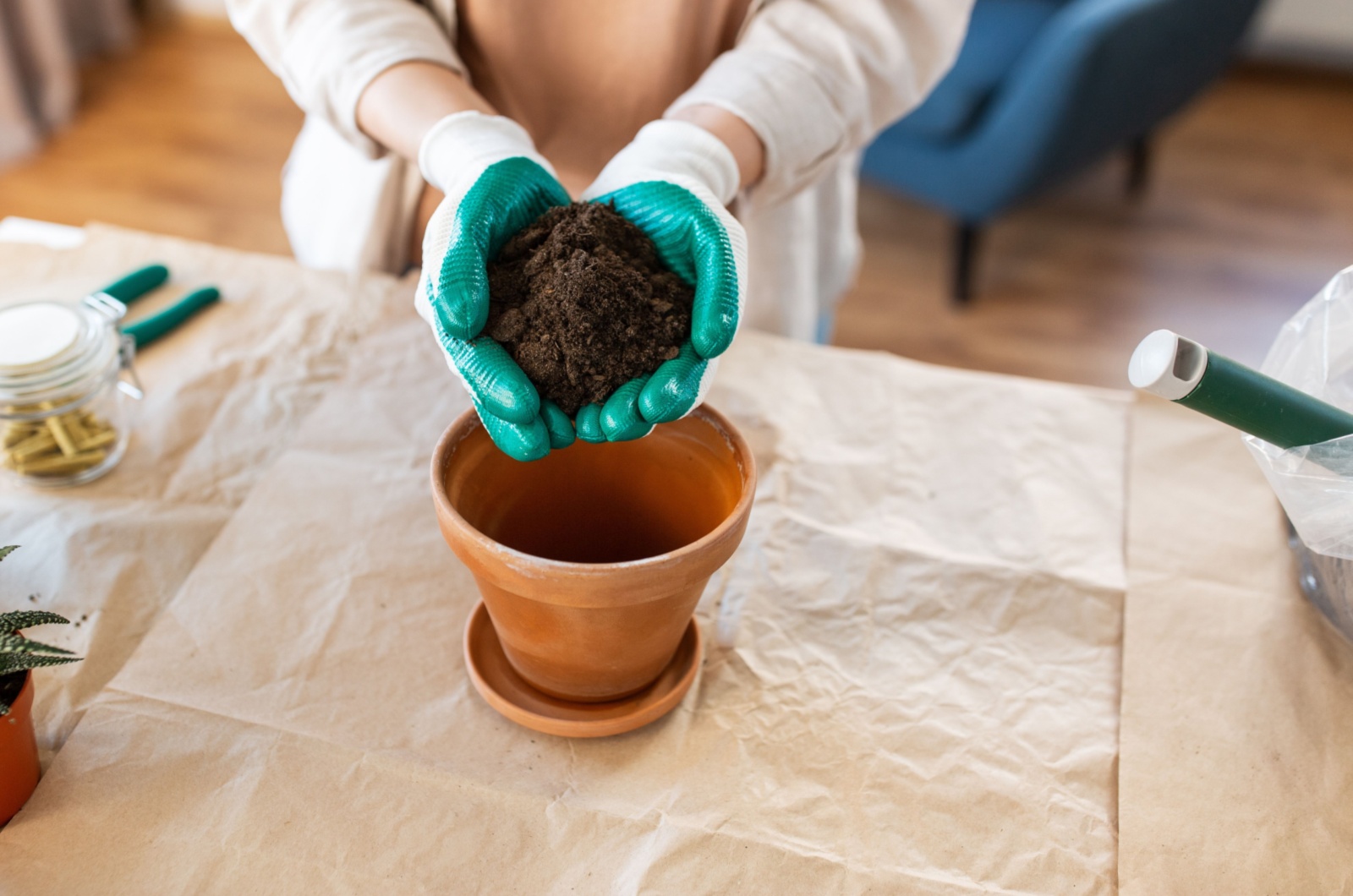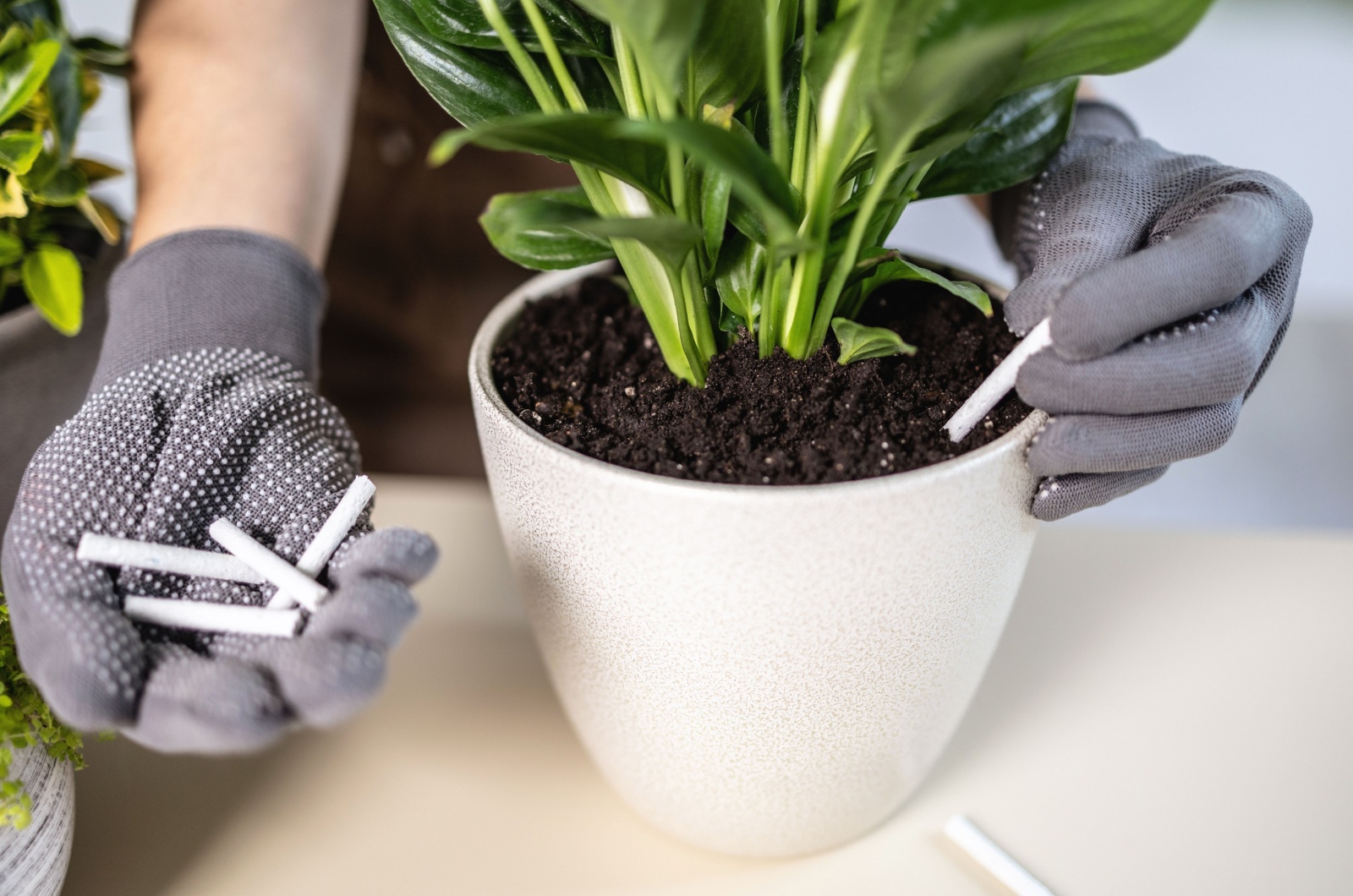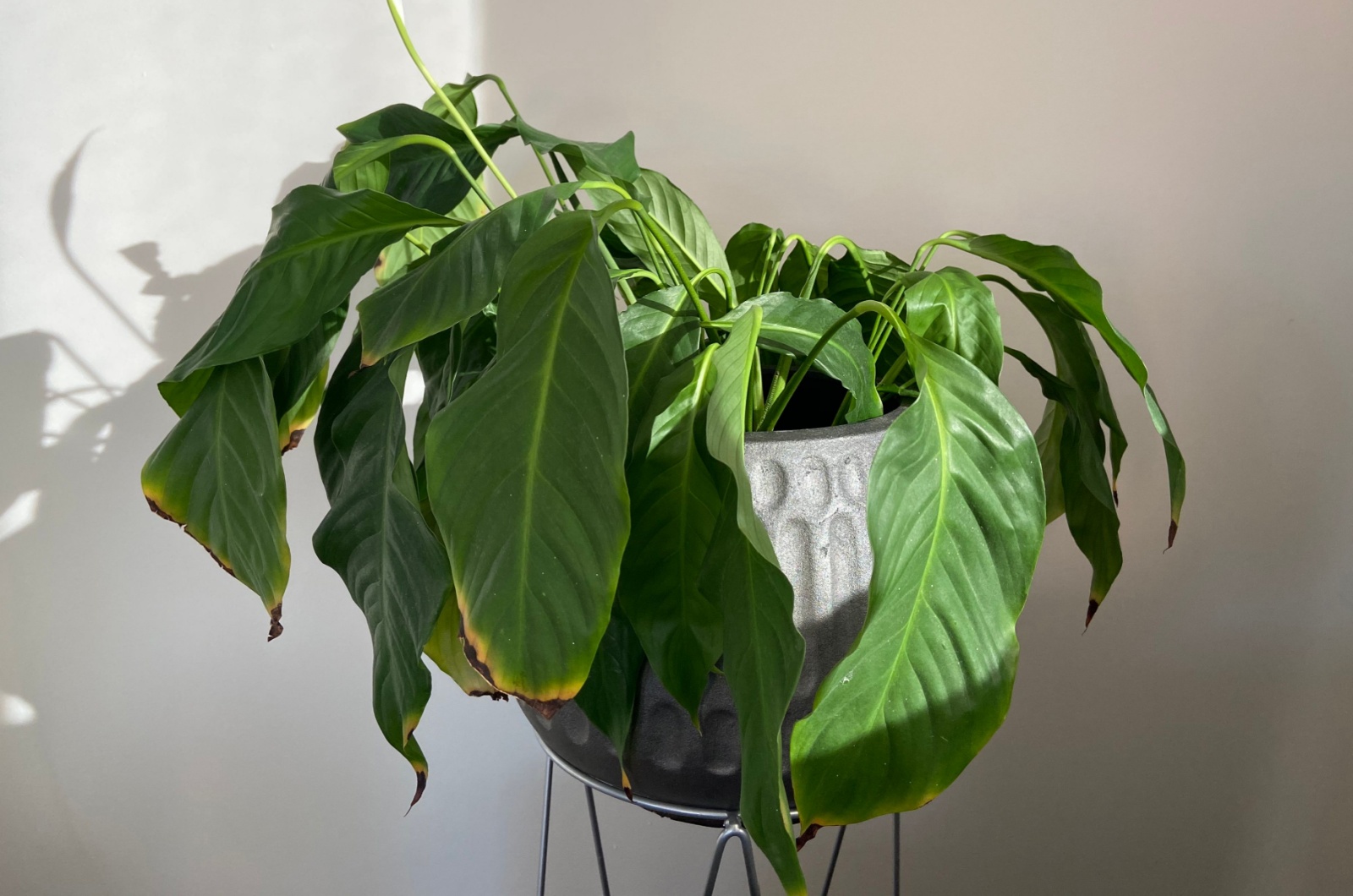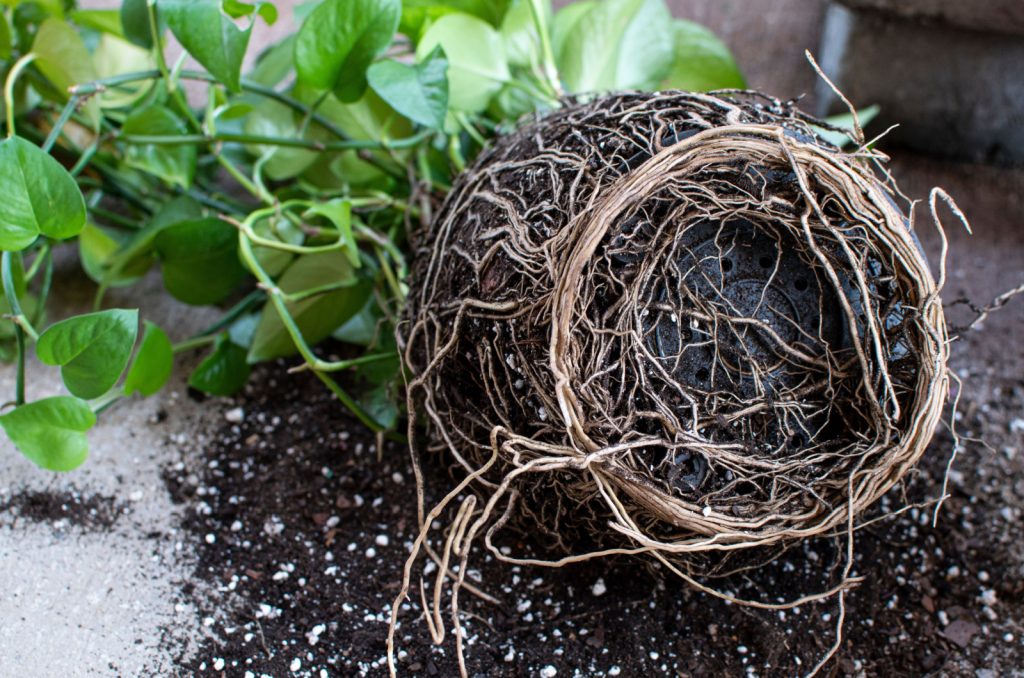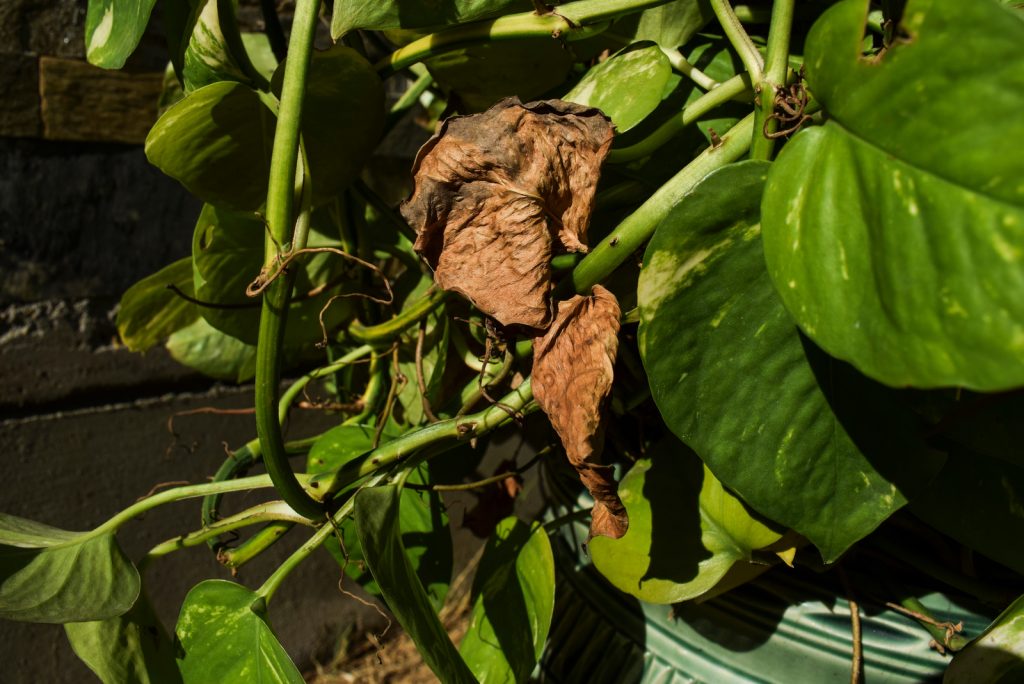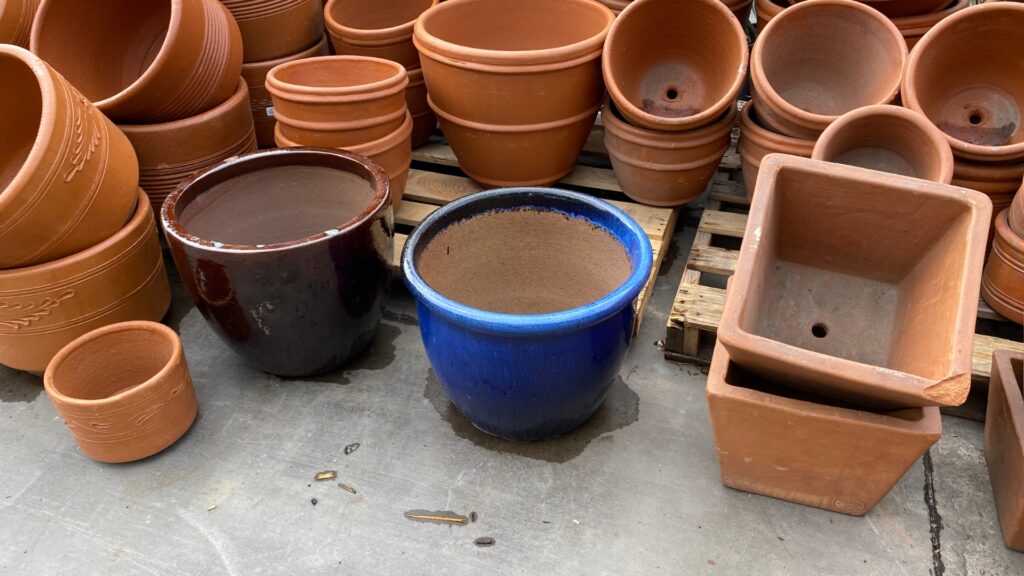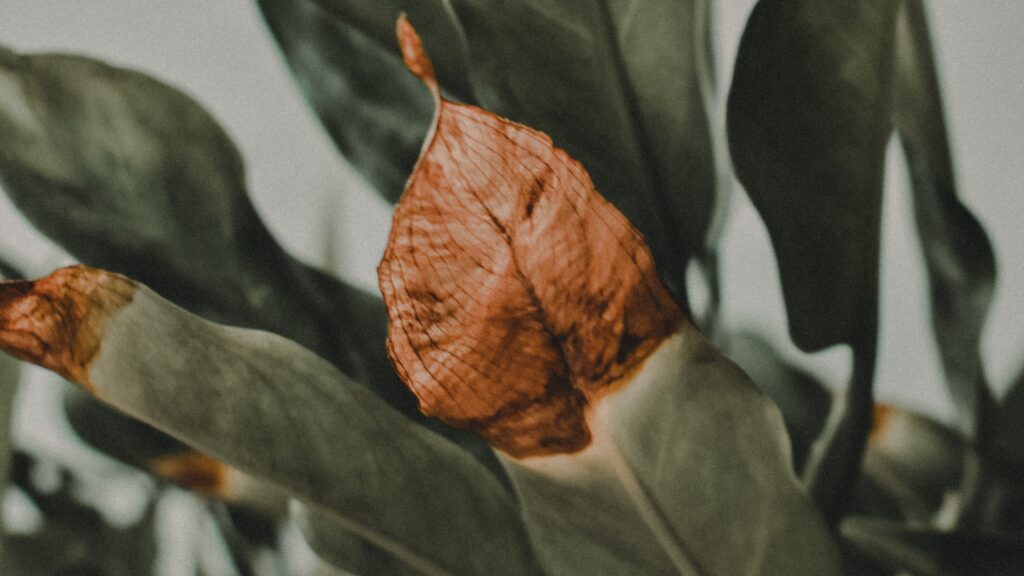Oh, the heartbreak of plant parenting! You check on your leafy baby, and BAM – brown tips staring back like a coffee stain on a white shirt.
I’ve been there, panicked, and Googled “how to make plants love me again”. Spoiler: brown tips aren’t plant revenge; they’re just a sign something’s up.
As someone who’s killed more plants than I care to admit, I’ve learned a thing or two (the hard way) about what those crispy edges mean.
So, before you panic, let’s decode the mystery. It’s not about playing Mozart – or is it?
1. Water, Water Everywhere… Or Not Enough?
Watering issues are the number one culprit behind brown tips. Too much water can leave your plant’s roots suffocating in overly wet soil.
Too little water, and your plant is channeling its inner drama queen, crying out for hydration. I’ve been on both sides of this – it was super sad seeing my Peace lily leaves turning brown (it’s fine now, don’t worry!).
Fix it: Stick your finger about an inch into the soil to check its moisture level. If it’s soggy, let the soil dry out a bit before watering again. If it’s dry, give your plant a thorough drink, letting the excess water drain out completely.
Consistency is key – find a rhythm that works for your plant and your schedule.
2. Salt Is For Fries, Not Soil
Over time, tap water, especially hard water, can leave behind salts and minerals that build up in the soil, effectively giving your plant salty snacks it didn’t ask for.
This can block the roots from absorbing the water and nutrients they need. I once had a Money tree with brown tips that I thought despised me – turns out, it was just tired of my tap water routine.
Fix it: Switch to filtered, distilled or rainwater, or let your tap water sit out overnight to allow some of the chemicals to dissipate. Every few months, flush your plant’s soil by running water through it until it drains out the bottom, washing away excess salts.
Your plant will feel refreshed, like it’s just had a spa day!
3. Humidity? Never Heard Of Her
If you’ve got tropical plants, they’re probably giving you the stink-eye during winter. These lush beauties thrive in high humidity, and when your home’s air gets dry, their leaves can’t handle the moisture loss.
My Monstera dubia once started crisping up so badly I thought it was auditioning for a fall-themed decoration.
Fix it: Boost the humidity by grouping plants together, using a pebble tray with water, or setting up a humidifier nearby. If you’re feeling fancy, mist your plants occasionally – but don’t overdo it. Just a light spritz will do.
Your tropical plants will think they’re back in the rainforest.
4. Sunburn Is Real, Even For Plants
Too much direct sunlight can scorch your plant’s leaves, turning the edges brown and crispy. It’s like your plant went sunbathing without SPF.
I figured this out when my aloe turned brown after it spent a generous amount of time on a sunny window (lesson learned!).
Fix it: Move your plant to a spot with bright, indirect light. If your plant thrives in low light, make sure it’s not getting blasted by the sun. For sun-loving plants, ease them into direct light gradually to avoid shocking their leaves.
5. The Soil Drama: Too Tight Or Too Loose
Roots are like the lifeline of your plant, and bad soil can smother or starve them.
Poor drainage can keep roots soggy, while overly loose soil can leave them gasping for water. It’s like giving your plant the wrong pair of shoes – uncomfortable and harmful over time.
Fix it: Repot your plant using fresh, well-draining soil that suits its specific needs. For most plants, a mix of potting soil and perlite or sand works wonders. If you’re unsure, do a little research on your plant type. While you’re at it, upgrade the pot if your plant has outgrown its current home.
6. Fertilizer Overload – Oops!
Fertilizer is like a power bar for your plant, but too much too soon can do more harm than good.
Over-fertilizing can lead to a buildup of salts in the soil, which literally burns the edges of the leaves. I once went on a fertilizer spree thinking I was helping my plants grow faster (of course, I wasn’t).
Fix it: Fertilize sparingly and only during the growing season (spring and summer). Use fertilizer at half the suggested strength to prevent stressing your plant. If you suspect fertilizer burn, flush the soil with water to wash out excess salts.
7. The Cold Shoulder (Or Hot Blast)
Temperature swings can wreak havoc on your plants. Drafts from windows, air conditioners, or heaters are the plant equivalent of sleeping under a leaky blanket – it’s stressful!
My Peace lily started drooping after I left it too close to a heater vent during winter. Learn from my mistakes and keep your plants nice and warm (but not too warm).
Fix it: Keep your plant in a stable environment, away from drafts and temperature extremes. If it’s near a window, make sure it’s not getting blasted by cold air. And if you use a heater, keep your plants at a safe distance so they don’t dry out.
8. Root Bound Blues
Plants outgrow their pots, and when they do, their roots start circling the container, struggling to find space. A root-bound plant can’t absorb water or nutrients properly, leading to—you guessed it—brown, crispy tips. My poor snake plant lived in the same pot for years before I realized it was basically strangling itself.
Fix it: Check if roots are poking out of the drainage holes or circling the soil surface. If they are, it’s time for a repot. Pick a pot one size up and refresh the soil to give your plant room to spread out. Your plant will breathe a sigh of relief—if it could.
9. Pests: The Uninvited Guests
Tiny, sap-sucking bugs like spider mites, thrips, and aphids can stress out your plant, causing brown tips and general misery. These little troublemakers hide under leaves and along stems, draining moisture and nutrients. I ignored a spider mite invasion once—big mistake. My plant’s leaves looked like they had been through a drought.
Fix it: Inspect your plant closely, especially under the leaves. If pests are present, wipe them off with a damp cloth and treat with insecticidal soap or neem oil. Keeping plants clean and dust-free also helps prevent infestations before they start.
10. Pot Size Panic
A pot that’s too small can cramp your plant’s style—literally. When roots don’t have enough room to stretch, they get stressed, and guess who pays the price? Yup, those leaf tips.
I once had a Calathea that looked fabulous on my windowsill until its leaves started browning like toast—turned out it was begging for a bigger home.
Fix it: Check if your plant has outgrown its current digs by gently sliding it out of the pot. If the roots are circling tightly or poking out the bottom, it’s time to upgrade. Choose a pot that’s just one size bigger and has proper drainage. Add fresh soil, give your plant a pep talk, and watch it perk up.
11. Chemical Sensitivities – It’s Not Just You
Household cleaners, air fresheners, and even scented candles can create a toxic environment for your sensitive green buddies.
Some plants react to chemicals in the air or water like they just got sprayed with perfume they hate—cue the brown tips. I accidentally misted my fern near an open bottle of bleach-based cleaner. Big. Regret.
Fix it: Keep your plant’s space toxin-free. Avoid spraying anything harsh nearby, and be mindful of what might be lingering in the air. If you’re using leaf shine or cleaning products on your plant directly, stop—plain water and a soft cloth are more than enough. Your plant doesn’t need a glam squad, just a clean, calm vibe.
Brown tips are your plant’s way of communicating, and with a little detective work, you can figure out what’s going wrong.
Whether it’s too much water, not enough humidity, or a bad sunburn, these fixes are simple and effective. Remember, even the best plant parents deal with crispy tips now and then.
So don’t stress – adjust, learn, and watch your leafy friend bounce back better than ever.

